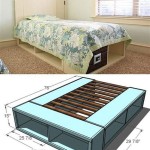How to Build Raised Beds on a Slope
Building raised beds on a slope can be a great way to maximize space and improve drainage in your garden. However, it is important to take into account the specific challenges of working with a sloped site. By following a few simple steps, you can build raised beds that will be both functional and attractive.
1. Choose the Right Location
The first step in building raised beds on a slope is to choose the right location. The best location will be one that receives plenty of sunlight and has good drainage. It is also important to consider the slope of the land. The steeper the slope, the more difficult it will be to build and maintain the raised beds.
2. Prepare the Site
Once you have chosen the right location, you need to prepare the site. This involves clearing away any vegetation and debris. You may also need to level the site if it is not already level. A good way to check the slope of the site is to use a bubble level or a laser level. The site must be leveled appropriately, and be sure to factor in the height of your planned raised beds.
3. Build the Frames
The next step is to build the frames for the raised beds. The frames can be made from a variety of materials, including wood, metal, or concrete blocks. The most common material for raised beds is wood. However, metal and concrete blocks are more durable and can last longer. Regardless of the material you choose, be sure to use rot-resistant materials to ensure that the frames will last for many years.
The frames should be built to the desired size and height of the raised beds. Be sure to factor in the slope of the land when determining the height of the frames. The frames should be level and sturdy.
4. Fill the Beds
Once the frames are built, you can fill the beds with soil. The best soil for raised beds is a mixture of topsoil, compost, and peat moss. This mixture will provide the plants with the nutrients they need to grow healthy and strong.
When filling the beds, be sure to pack the soil down firmly. This will help to prevent the soil from eroding and will also help to keep the plants in place.
5. Plant the Beds
Once the beds are filled, you can plant the plants. When planting, be sure to space the plants according to the instructions on the plant tags. You should also water the plants deeply after planting.
Maintenance
Raised beds on a slope will require some maintenance to keep them looking their best. This maintenance includes watering, weeding, and fertilizing. You should also check the beds for erosion regularly and make repairs as needed.
By following these steps, you can build raised beds on a slope that will be both functional and attractive. Raised beds are a great way to maximize space and improve drainage in your garden. They are also a great way to grow vegetables, herbs, and flowers.

How To Build An Organic Raised Bed On A Sloped Yard Deeply Southern Home

How To Build An Organic Raised Bed On A Sloped Yard Deeply Southern Home

How To Build An Organic Raised Bed On A Sloped Yard Deeply Southern Home

How To Build Raised Garden Beds On A Slope

How To Build A Terraced Garden Bed On Slope

How To Build Raised Garden Beds On A Slope

Can You Grow A Raised Bed Garden On Slope Gardening Channel

How To Build An Organic Raised Bed On A Sloped Yard Deeply Southern Home

How To Build An Organic Raised Bed On A Sloped Yard Deeply Southern Home

Building Raised Beds Down A Slope Fenced In Garden Area Part 3







